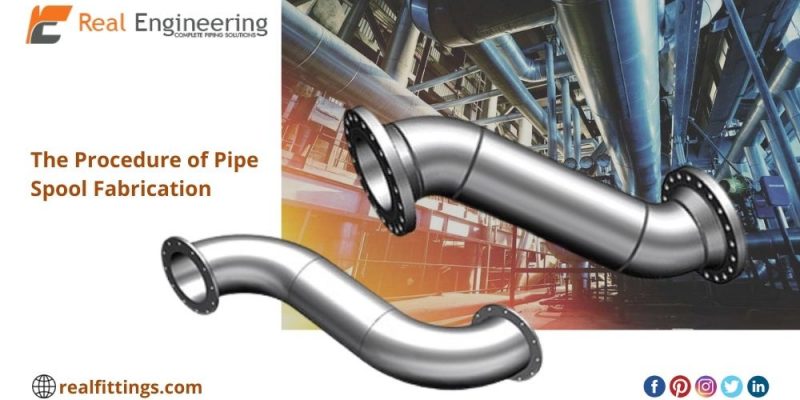During the pipe fabrication procedure, it is necessary to construct the pipes and pipe fittings in accordance with the drawing on the spool. It is important for pipe fabricators to consider the size of the assembly since transportation may be a difficulty.
Sub-assemblies are a cost-effective method of moving huge projects under such circumstances. There are several pipe spool fabrication companies. The following are the stages that must be followed while fabricating piping:
Marking and Cutting:
Marking must be completed in accordance with the design drawing requirements, and the results must be validated by the responsible supervisor before cutting may begin. Pipe cutting is often performed in the following ways:
- Pipes made of carbon steel are cut and ground using gas.
- Pipes made of alloy steel can be ground or cut using incendiary materials.
- Pipes made of stainless steel can be cut with a grinder or a plasma cutter.
Tagging:
Pipe heat numbers are transmitted to the cut pieces prior to cutting the pipe by dye stamping, paint marking, or Tagging.
In the following phase, end preparation (bevelling) and fit-up are carried out in accordance with the authorised Specification and Work Procedures (WPS).
To avoid longitudinal seams on joining pipes coming together in a single line at a butt-welded junction, extra care must be used while welding pipes together. Seams must be spaced at least 100 mm apart, and they must also be large enough to clear branch connections. It is important to ensure that longitudinal seams do not rely on the steel framework during construction.
Fabricating Welding Pipes and Fittings:
The pipes and fittings for the fit-up are then put on a temporary pipe bed, and the supports are firmly attached. Following that, the arrangement is evaluated for proper Fit-Up. Joints are welded by trained welders once they have been cleared by the inspection team.
Data Marking:
Using a metal paint marker, various details such as pipeline number, component heat number, joint number, fit-up inspection signature, welder number, visual inspection signature, and welding date are marked near the junction.
With the use of a paint marker, the pipe spool number is identified, and an aluminium tag is attached to the pipe spool.
Heated-treatment:
Preheating and PWHT will be carried out in the shop or the field, depending on project-specific needs.
Afterwards, the pipe spools are moved from the pipe fabrication shop to the laydown area for final assembly.
Inspection:
Nondestructive testing (NDT) is carried out in accordance with the project specification or recommendations. After receiving NDT approval, spools are released for erection/painting with a release note attached to them.
Documentation:
Following painting, a field inspection is carried out to ensure quality control, and the results are recorded in the approved manner. The spool is released for erection once it has been painted and inspected. The professional pipe spool fabrication companies do this process with great concern.
Pipe Fabrication in Stainless Steel:
Pipe fabrication in stainless steel is often done in a shop that is separate from the fabrication of carbon steel and alloy steel. The equipment and tools that are utilized for CS fabrication are not permitted to be used for SS fabrication
Read more: Which Types of Steel Bars Applied in Construction?



















Comments